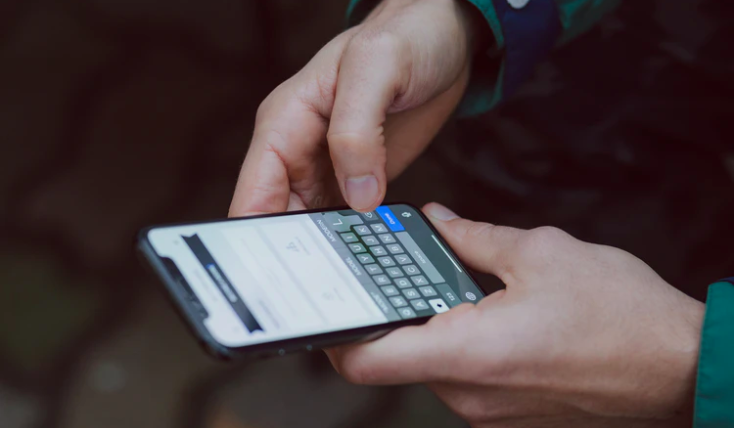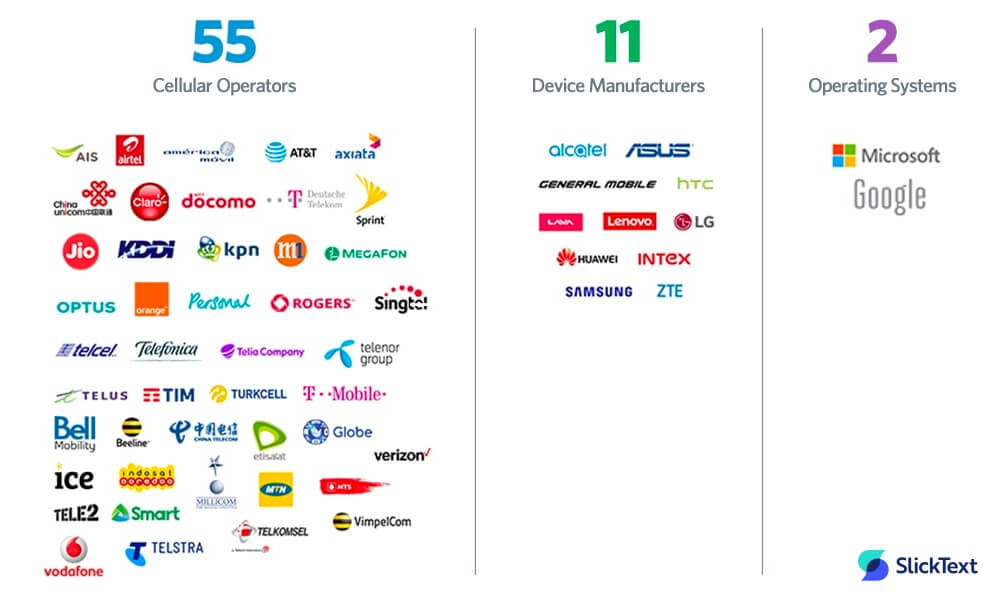What Is RCS Messaging and How Does It Work?

Updated April 16, 2024
RCS messaging is a new messaging protocol that’s designed to replace SMS. Even though mobile phones have changed drastically since the early 2000s, the messaging protocols through which people communicate haven’t — yet.
Since SMS was developed, it’s been the go-to method of sending and receiving messages for most phones, despite the fact that it’s overdue for an update.
RCS enhances daily messaging activities with features such as read receipts, group messaging features, and multimedia capabilities. It’s the messaging protocol for the smartphone era, taking features you’re probably familiar with from apps like Facebook Messenger or WhatsApp and turning them into everyday standards.
Here’s some detail on what RCS messaging is and how it will impact your mass texting strategy.
What is RCS messaging?
RCS stands for “Rich Communications Services” and experts predict it will replace SMS in the near future. Think of it as an evolution of text messaging. It incorporates many of the features of popular messaging apps like iMessage or WeChat while still operating on a telecom network.
What is RCS chat? This is a synonym for RCS messaging, and the terms are used interchangeably. There are some differences between RCS and SMS, though.
RCS vs SMS: What’s the difference?
RCS messaging is like a next-generation SMS. Tech giants like Google are going all in on RCS messaging (if you’re more of an audio person you can listen to a detailed podcast about RCS updates here), while Apple is dragging its feet on RCS adoption.
There are a few key upgrades to note when comparing RCS vs SMS. Take a look at this side-by-side chart comparison of SMS vs RCS to see what the difference is.
| Capabilities | RCS | SMS |
| Uses a data connection | Yes | Yes |
| Send read receipts or see what friends are typing | Yes | No |
| Send files | Yes, up to 100MB | No |
| Character limit | No | Yes, 160 characters |
What’s so special about RCS compared to SMS? Here are a few applications of the new technology:
- You’ll be able to send read receipts and see when your friends are typing.
- You’ll be able to send files directly through RCS. Like an enhanced version of MMS marketing, imagine getting your airline tickets or choosing concert seats directly from an RCS message.
- It will make it easy to send multimedia elements such as GIFs or stickers.
- Group messages will be streamlined, with more personalization options.
These are many of the features that smartphone users are familiar with in their messaging apps, but with RCS you’ll be able to have this user experience when messaging anyone, regardless of the phone’s operating system.
When will you get RCS?
History of implementing RCS
Though formed in 2007, it wasn’t until 2016 that many U.S. carriers began supporting RCS. T-Mobile was the first carrier to launch RCS messaging in the United States, followed by Verizon, AT&T, and Sprint.
In 2016, the GSM Association, which is the trade body representing mobile operators, agreed to what they call a “Universal Profile” to aid the rollout of RCS. The way they word it, the Universal Profile is:
“A single, industry-agreed set of features and technical enablers developed to simplify the product development and global operator deployment of RCS.”
When can you use RCS messaging in the United States?
In a lot of countries, such as the U.K., France, and Mexico, Android users already have the opportunity to opt in to RCS. Even in the US, this option is becoming more commonplace. In 2024, nearly every T-Mobile Android comes with RCS Universal Profile 1.0 automatically built into the phone’s messaging app.
Verizon users with a Pixel 3 or Pixel 3XL should have RCS through Google’s Android messaging app or Samsung Messages. But, you can technically only send RCS messages through these apps to other users of these apps.
In May 2020, T-Mobile announced a partnership with Google that allows T-Mobile Android users to send RCS messages to other Android users across the globe. RCS statistics show that un-carrier customers globally send more than 700 million RCS messages daily. This is meaningful progress in promoting RCS adoption.
Who supports RCS messaging?
Originally, RCS messaging in the United States was supposed to be supported by the carriers in partnership with Google, but that approach has changed. We’ll get into just how it’s changed below, but first you should know that there are more than 60 organizations that currently support RCS messaging worldwide, and that number is growing.
Here’s a snapshot of everyone who has signed on so far.

Cross-Carrier Messaging Initiative
To roll out RCS messaging in the United States, the “Big Four” networks — Verizon, AT&T, T-Mobile, and Sprint — formed a joint venture dubbed the Cross Carrier Messaging Initiative (CCMI) and announced in a joint press release in October 2019. These are the goals of the CCMI:
- Create more opportunities for meaningful business-to-consumer messaging. (This is great news for marketers and those who use mass text messaging as a marketing and communications technique, as we’ll expand upon below).
- Make it easier to send high-quality photos and videos privately via individual or group chat.
- Allow consumers the ability to interact with their favorite brands or take actions related to their favorite brands directly from their messaging app. These actions could be anything from ordering food or a ride share to paying bills, reserving a table, or confirming an appointment.
The CCMI announced that it is developing its own app, which will be incompatible with Google’s Android Messages.
How to enable RCS messaging
If you have an Android with RCS messaging you can enable it by following the on-screen prompts from within Android Messages. They should be labeled as “chat features,” since RCS Chat is a synonym for RCS messaging. If the individuals you are chatting with do not have RCS chat, your messages will automatically convert to SMS or MMS.
Previously, Apple refused to enable RCS messaging. However, the company recently announced it will introduce RCS for all iPhones at some point in 2024. This new messaging standard will be delivered as part of a software update.
How can RCS messaging help marketers?
RCS messaging could provide a powerful tool for businesses looking to engage with their audience like never before. It has the potential to extend the bounds of creativity in your marketing campaigns and could possibly help to make your efforts to connect with your clients more streamlined and meaningful.
Here are a few of the ways it is expected that RCS messaging will improve the relationship between brands and their clients.
Easy to verify
Nothing disintegrates trust between your business and your audience faster than coming across as spammy. RCS messaging enables sender verification so your clients can easily recognize your number.
Send real-time updates
RCS messaging will allow companies to send users status updates on orders, boarding passes, seat selections, and upcoming appointments. Plus, you’ll be able to do all of this using multimedia to enhance your message. In this instance, it’s similar to MMS but a lot more flexible. You can send GIFs, videos, and loyalty cards directly through an RCS message.
Maximize flexible content options
Because RCS messaging doesn’t have the standard 160-character limit that SMS messaging does, you can write longer messages to your clients. Instead of skimping on words and finding abbreviations, you’ll have some leeway to inject your brand’s voice into the message. Plus, you can add special touches like audio, video, stickers, or high-resolution photos. You’ll be able to send PDFs, display product carousels, add calendars for scheduling, and, best of all, suggest a direct call-to-action that customers can immediately take.
Streamline your call-to-action
Nowadays, if a user wants to call your company or click on your website, they have to open their web browser or leave their messaging app. With RCS messaging they’ll be able to click a button from the text message itself to call you or access certain elements of your website directly from the message.
This creates less friction in the call-to-action process which is likely to have the impact of creating more conversions. Essentially, you’ll lose fewer people along the way.

How does RCS impact SlickText?
At SlickText, we love new technology. We’re always looking out for the next great thing that we can offer as part of our mass text messaging services. We’ve already rolled out new features in our platform that allow you to take advantage of this hot new method of communicating with your customers.